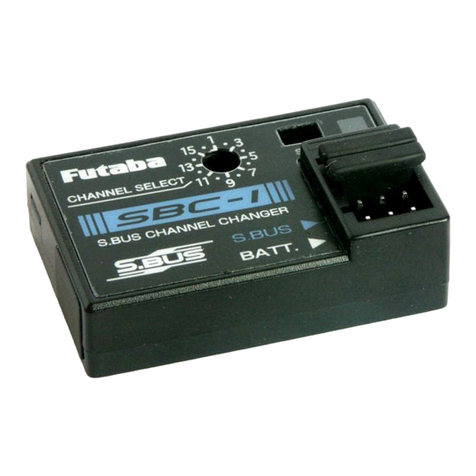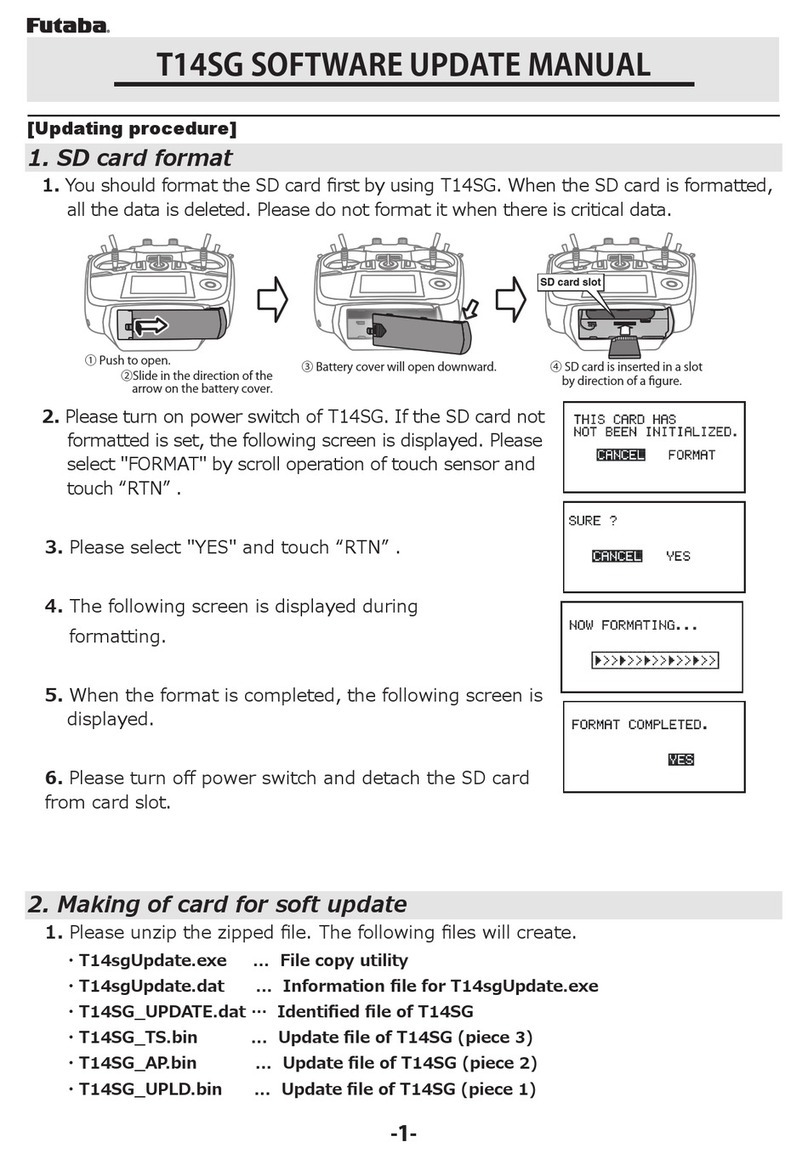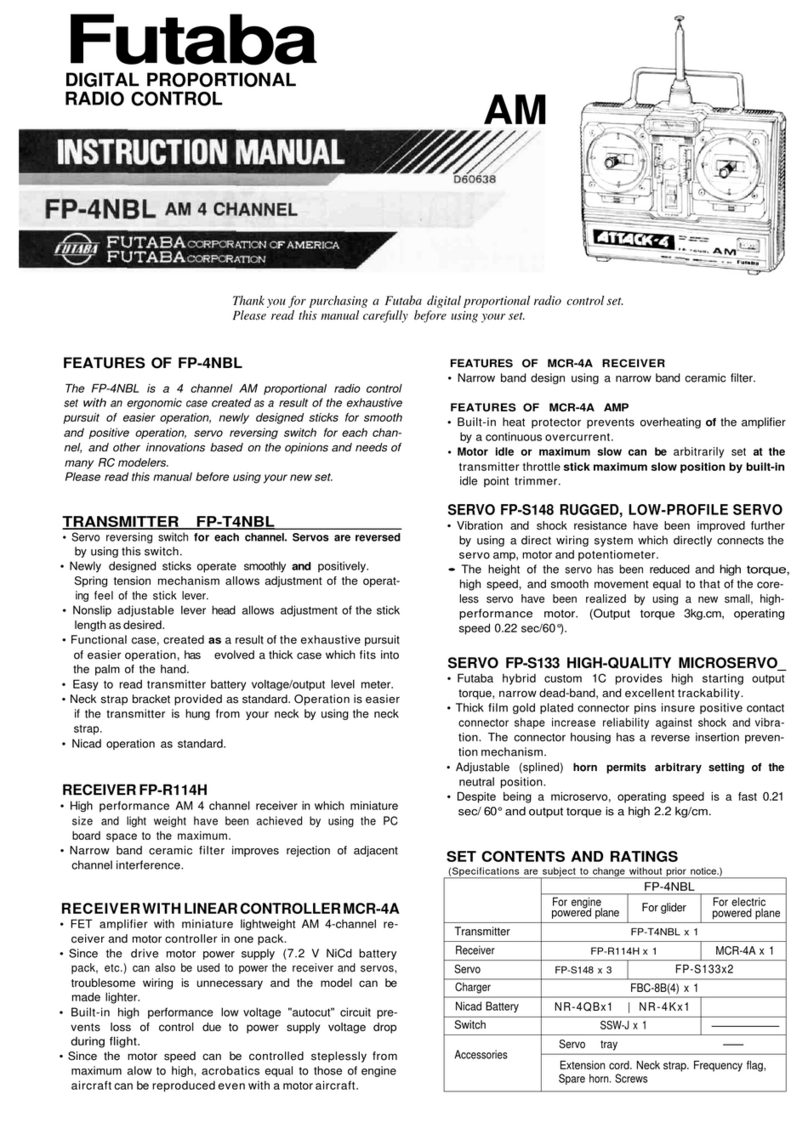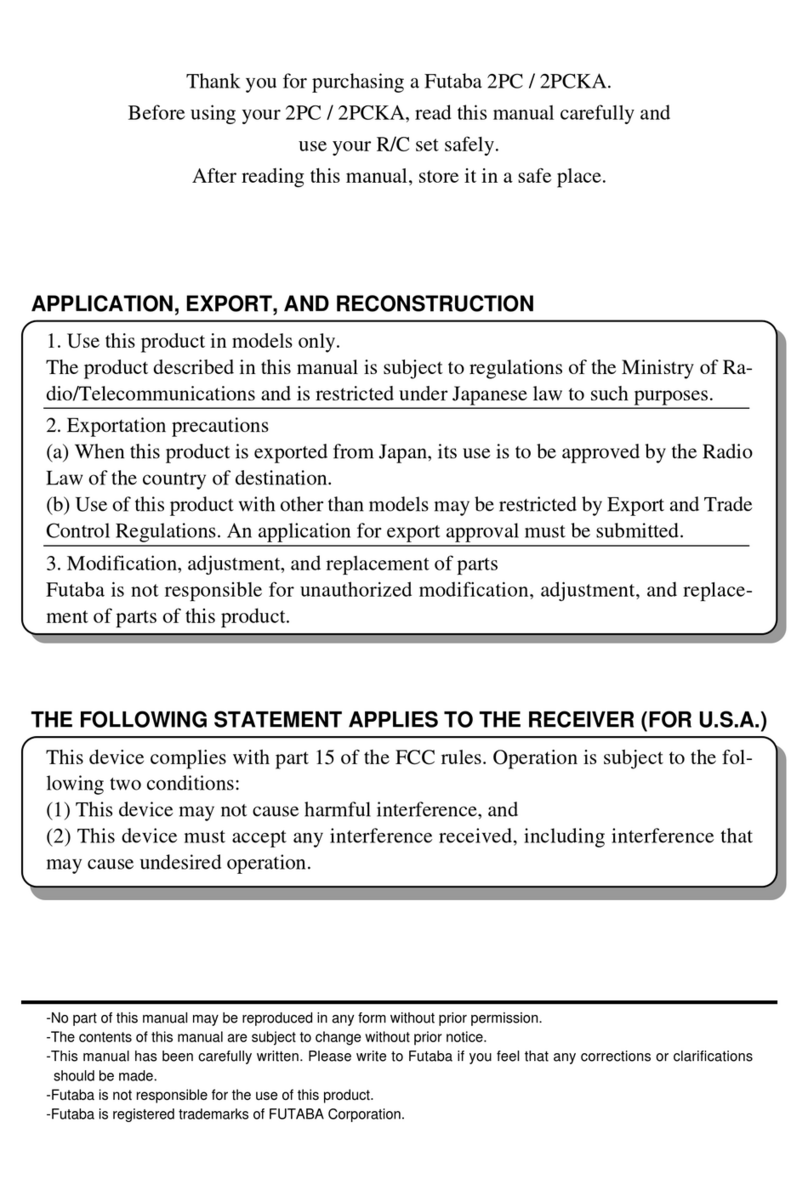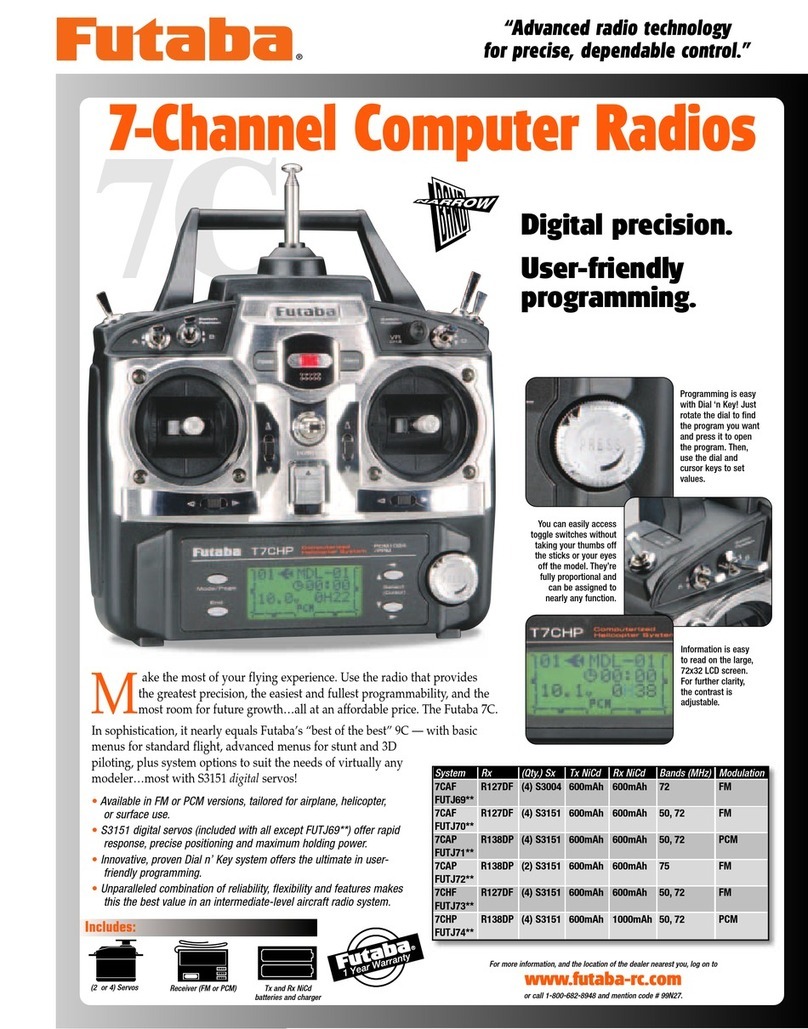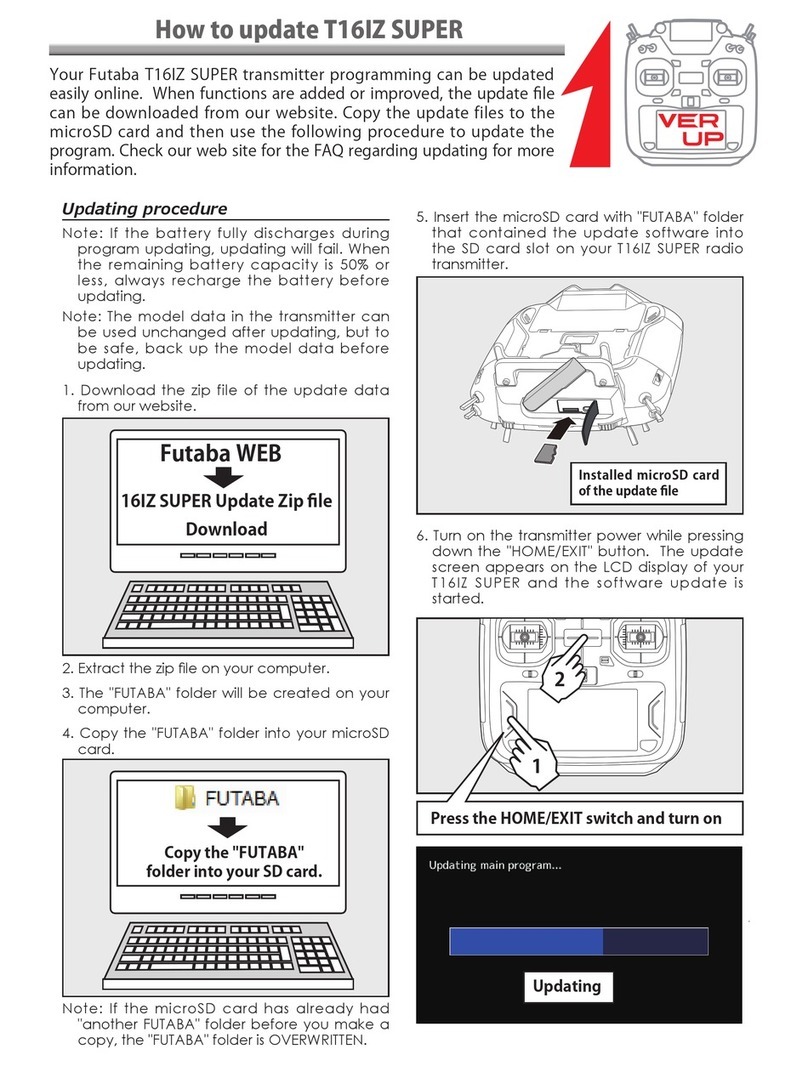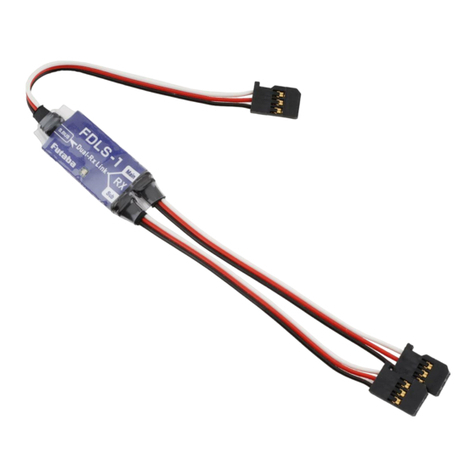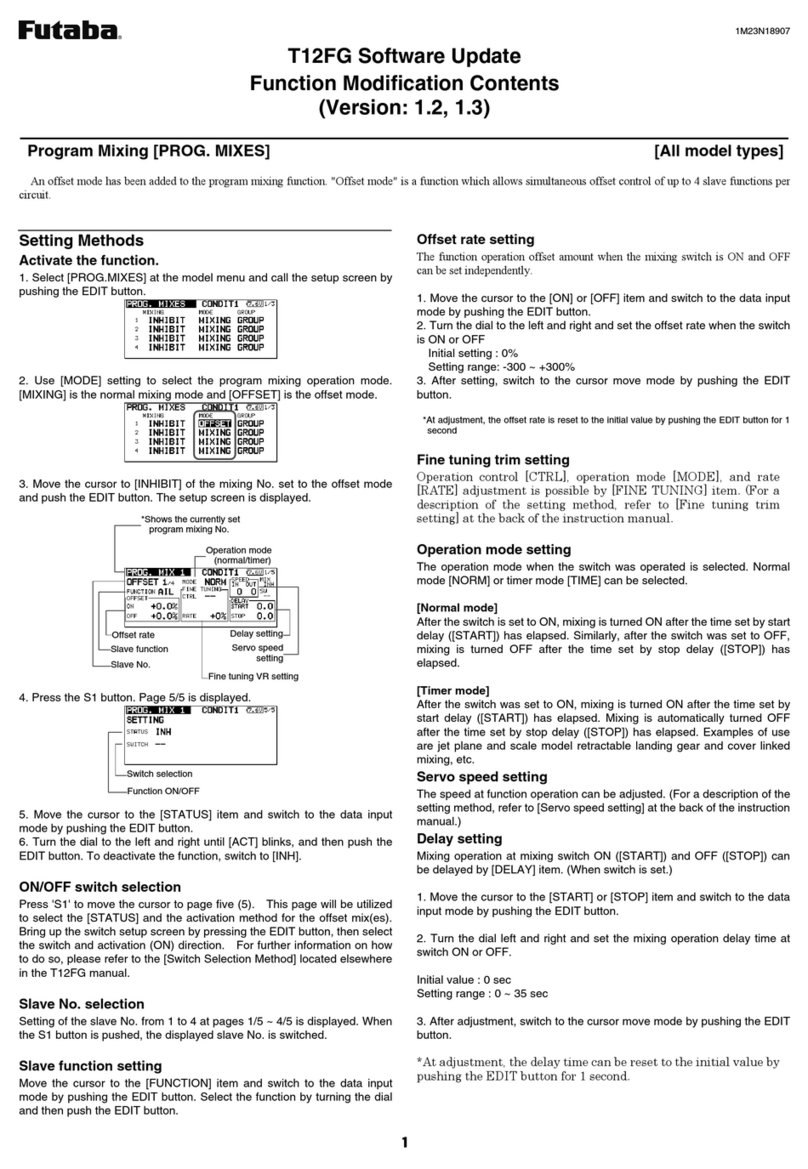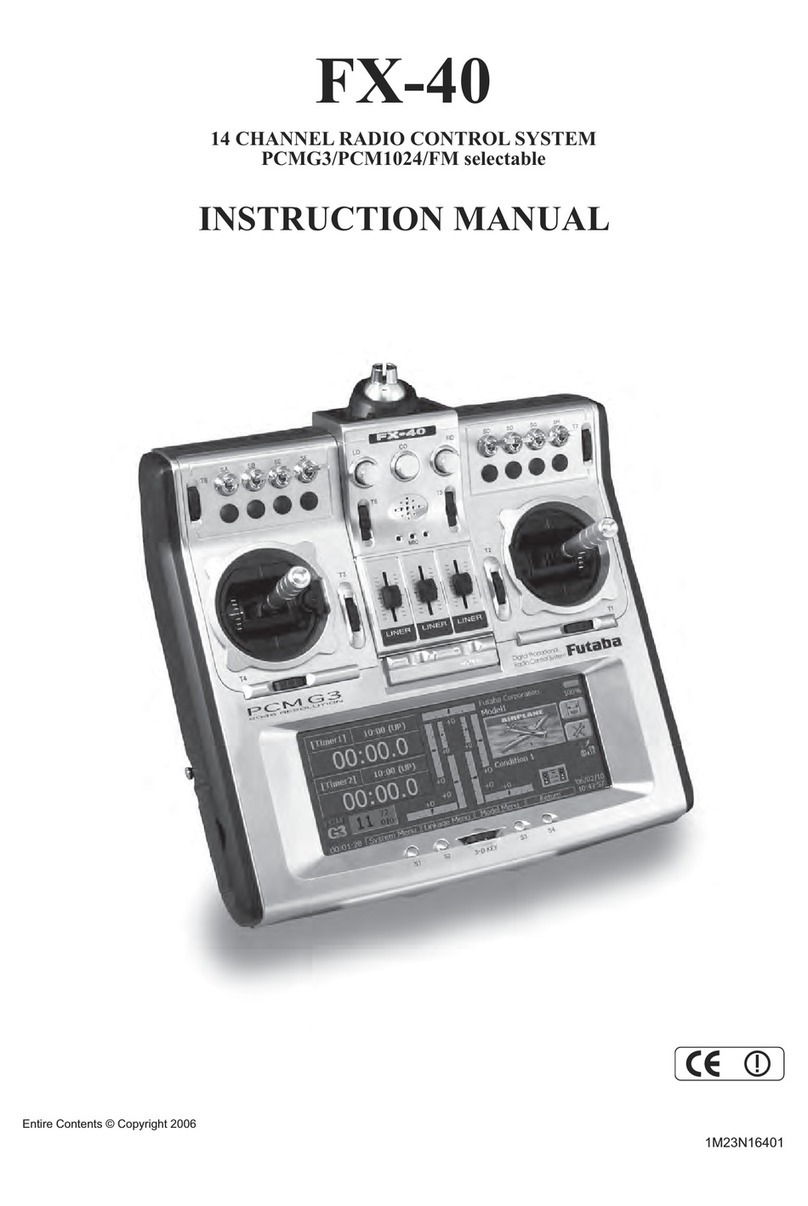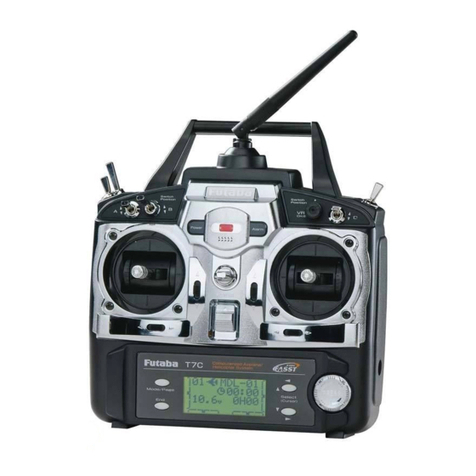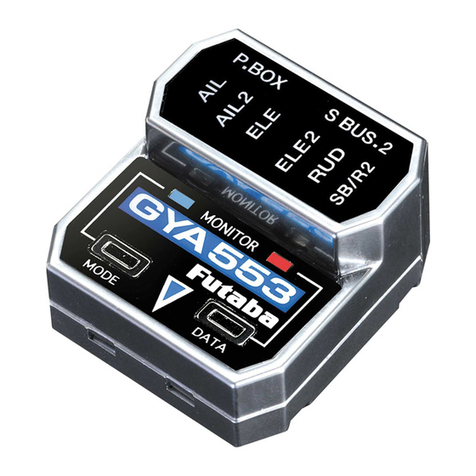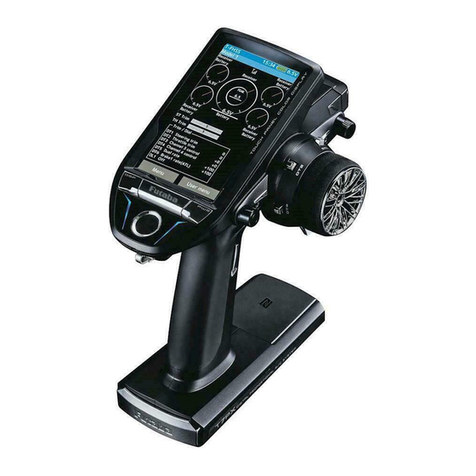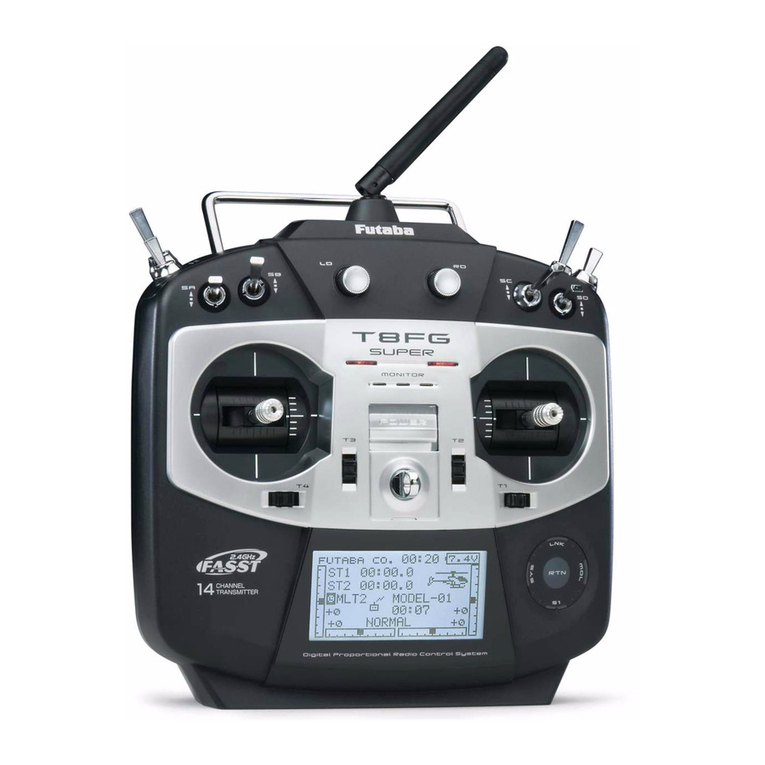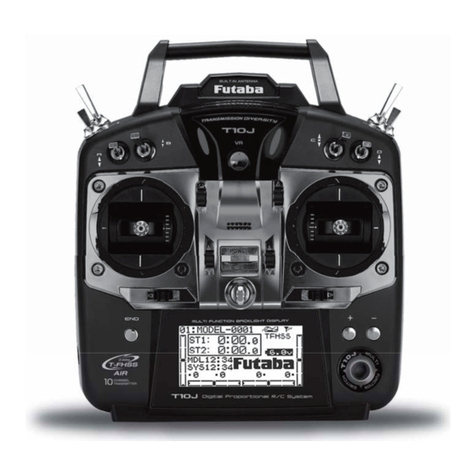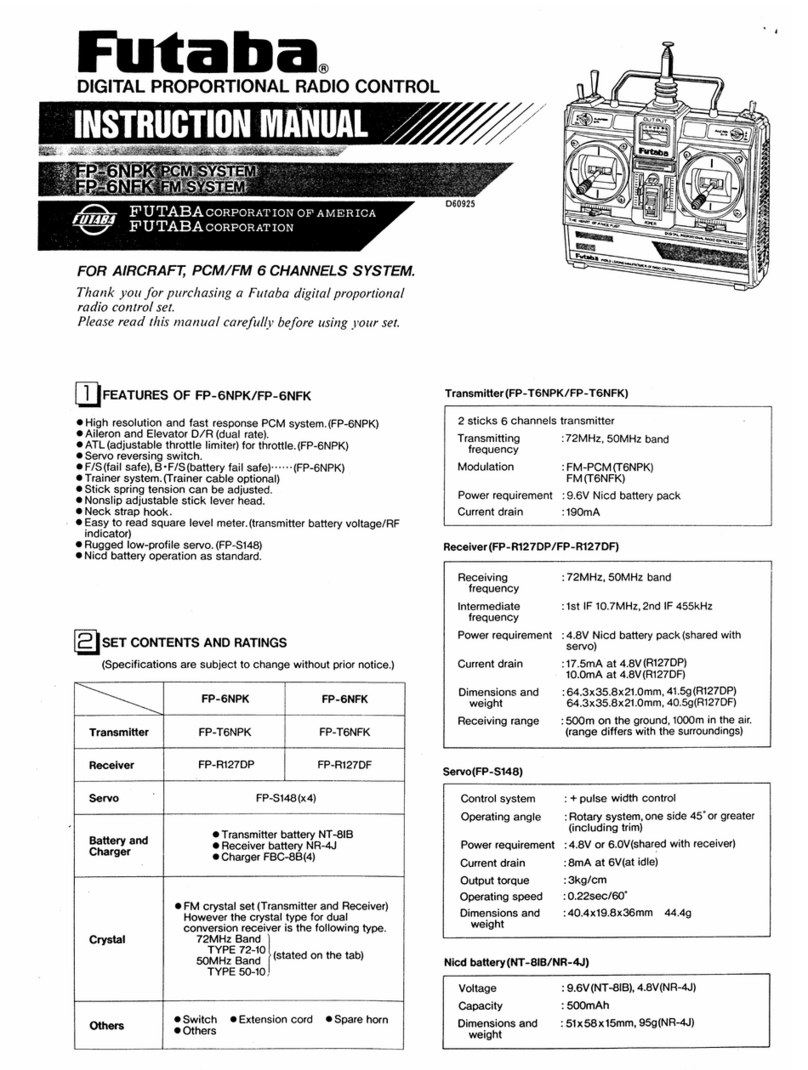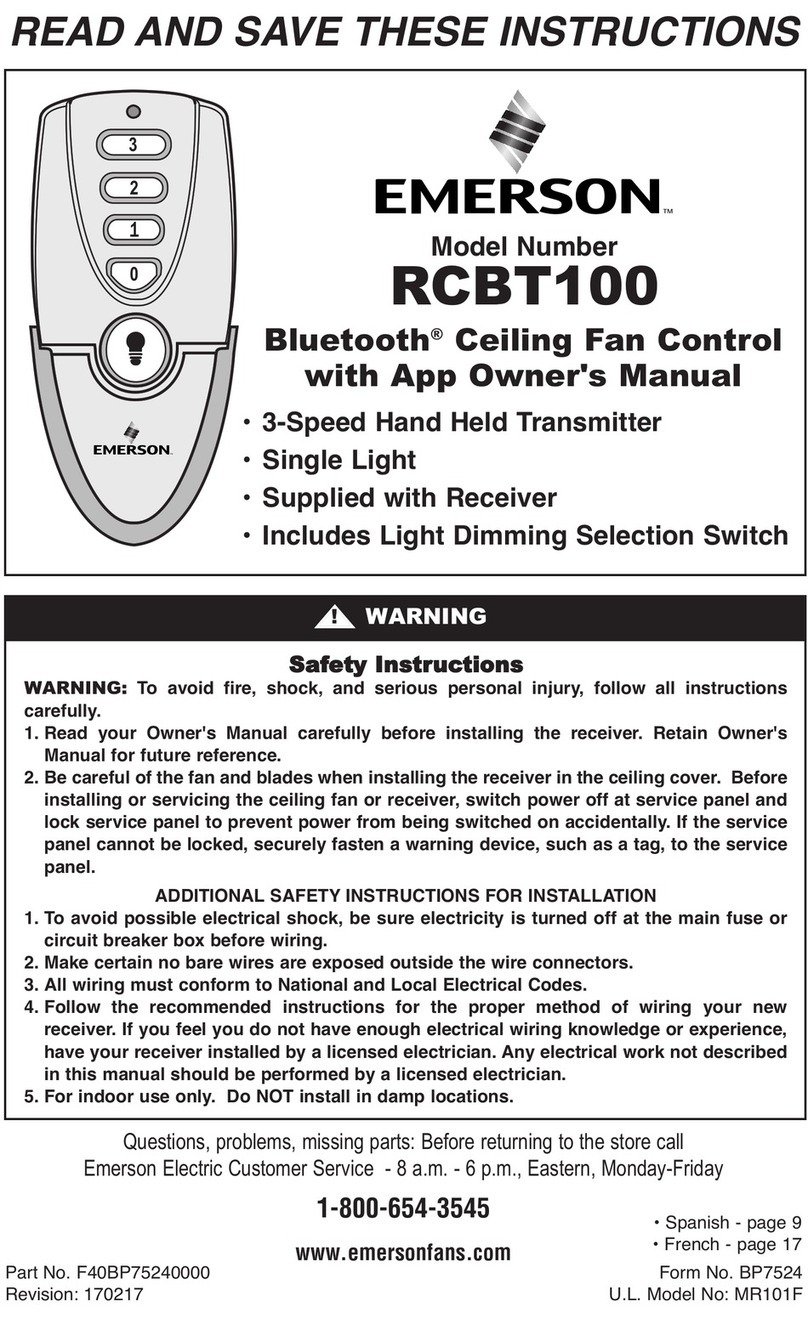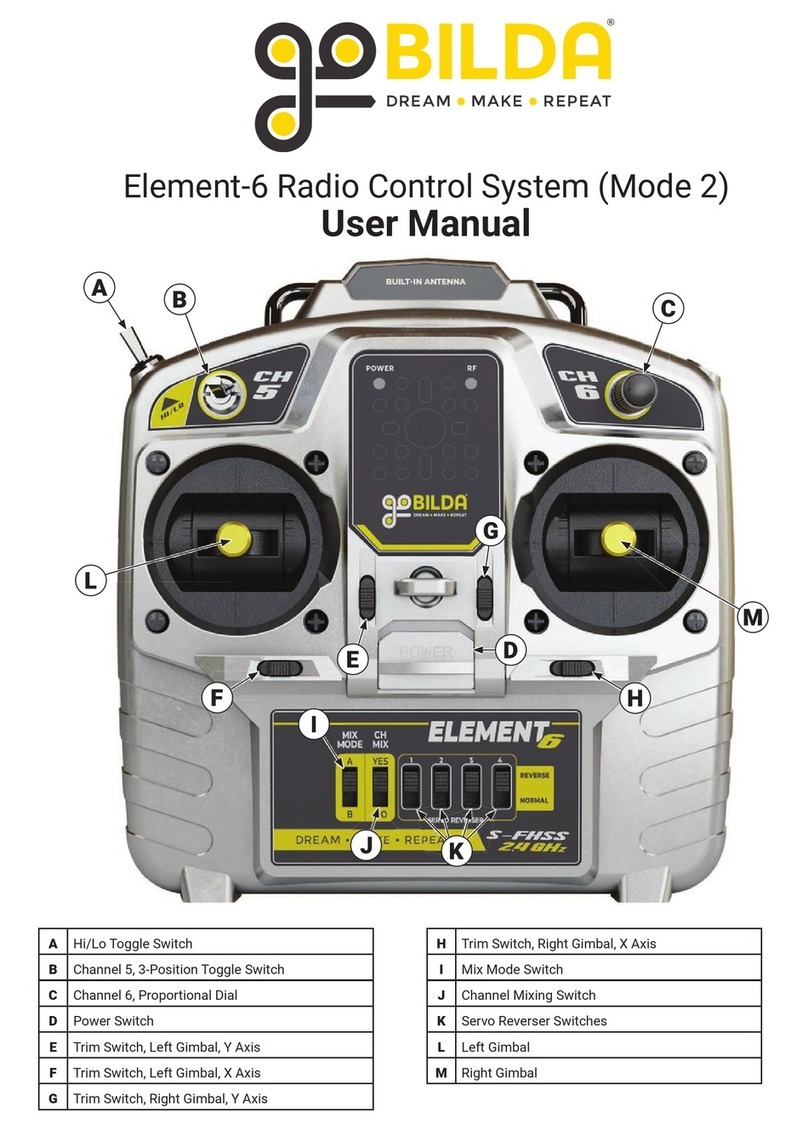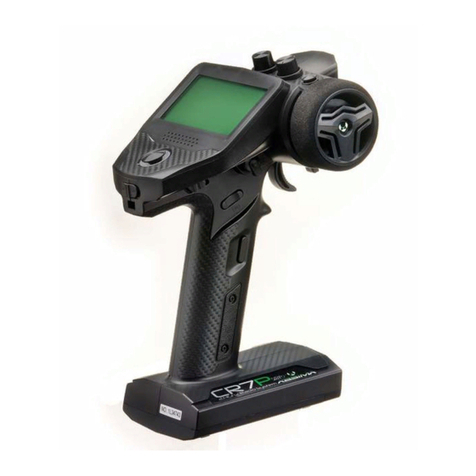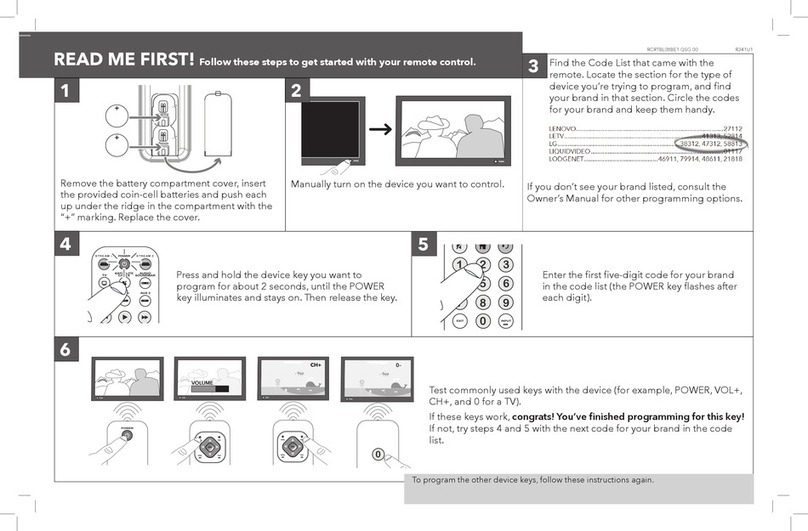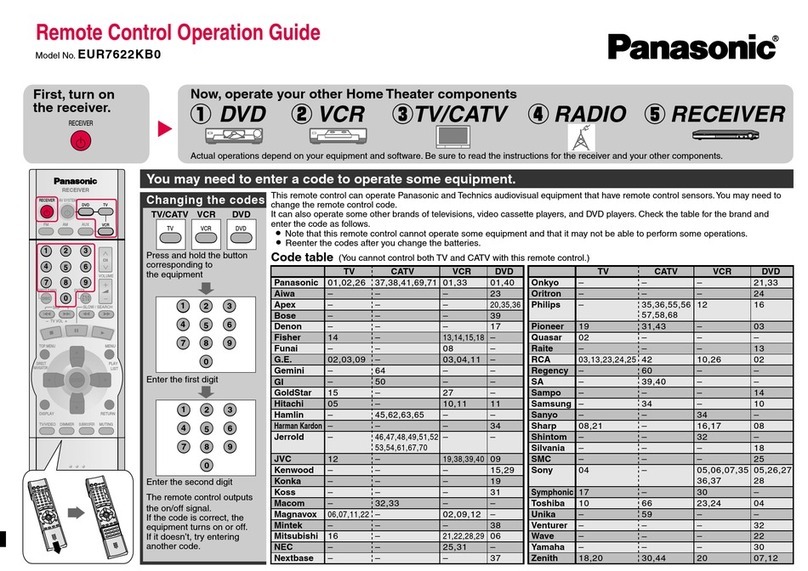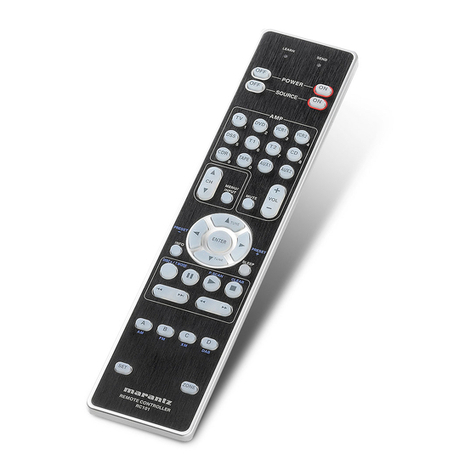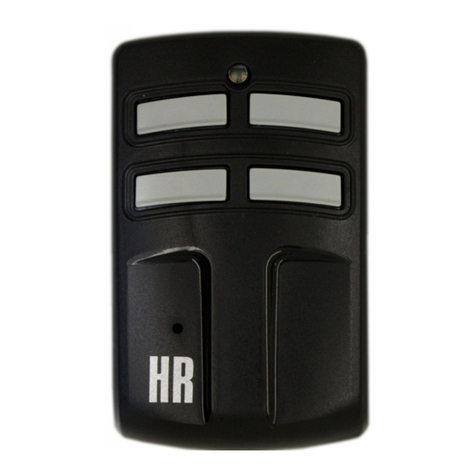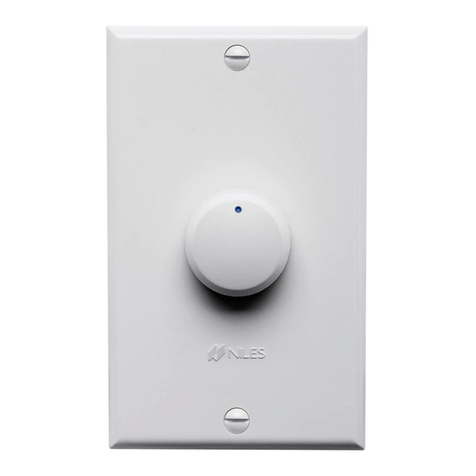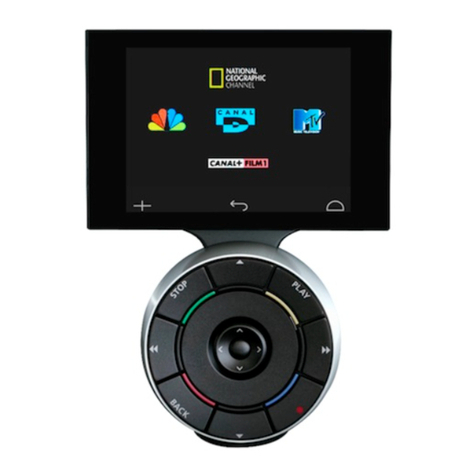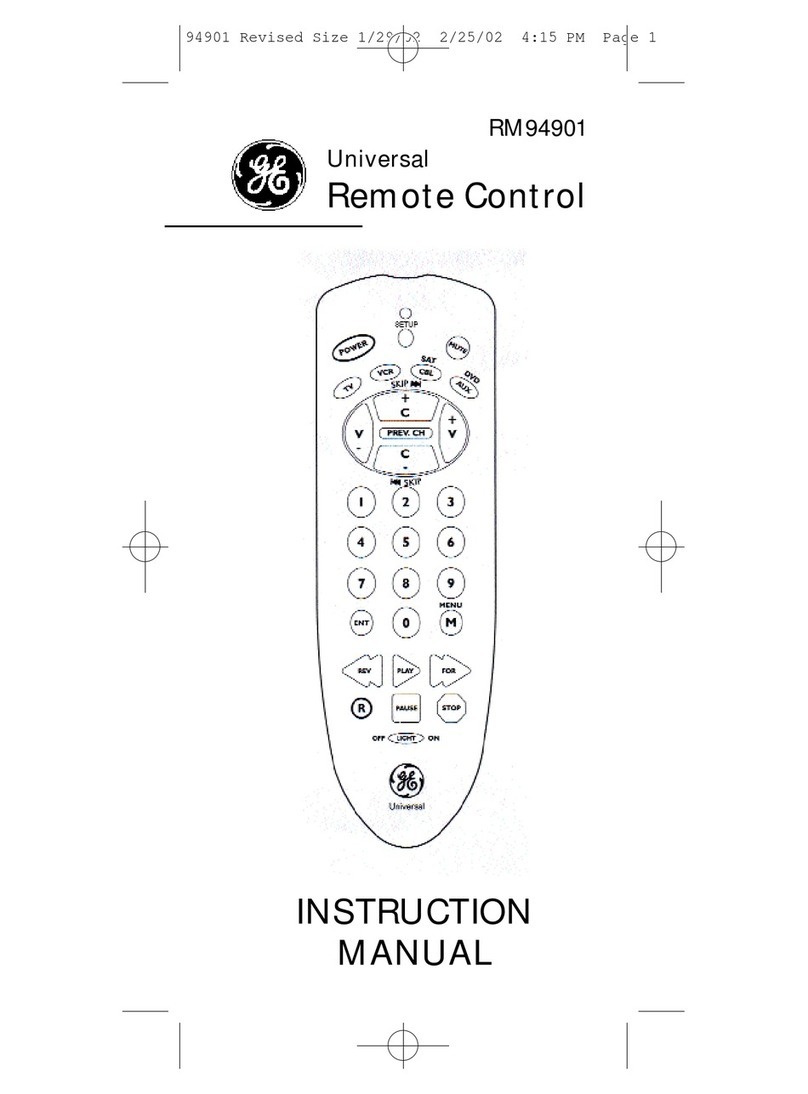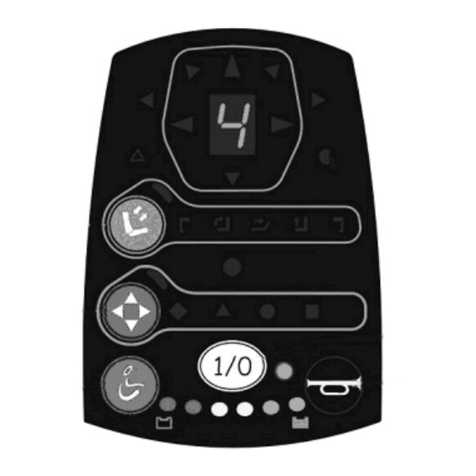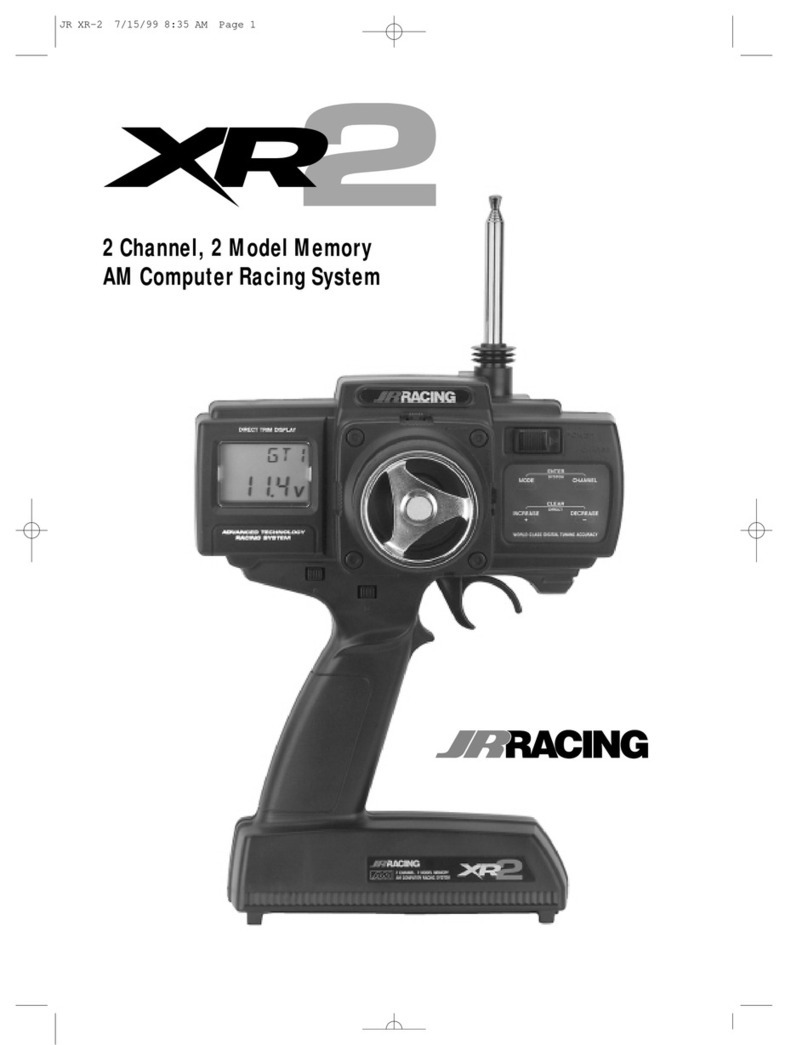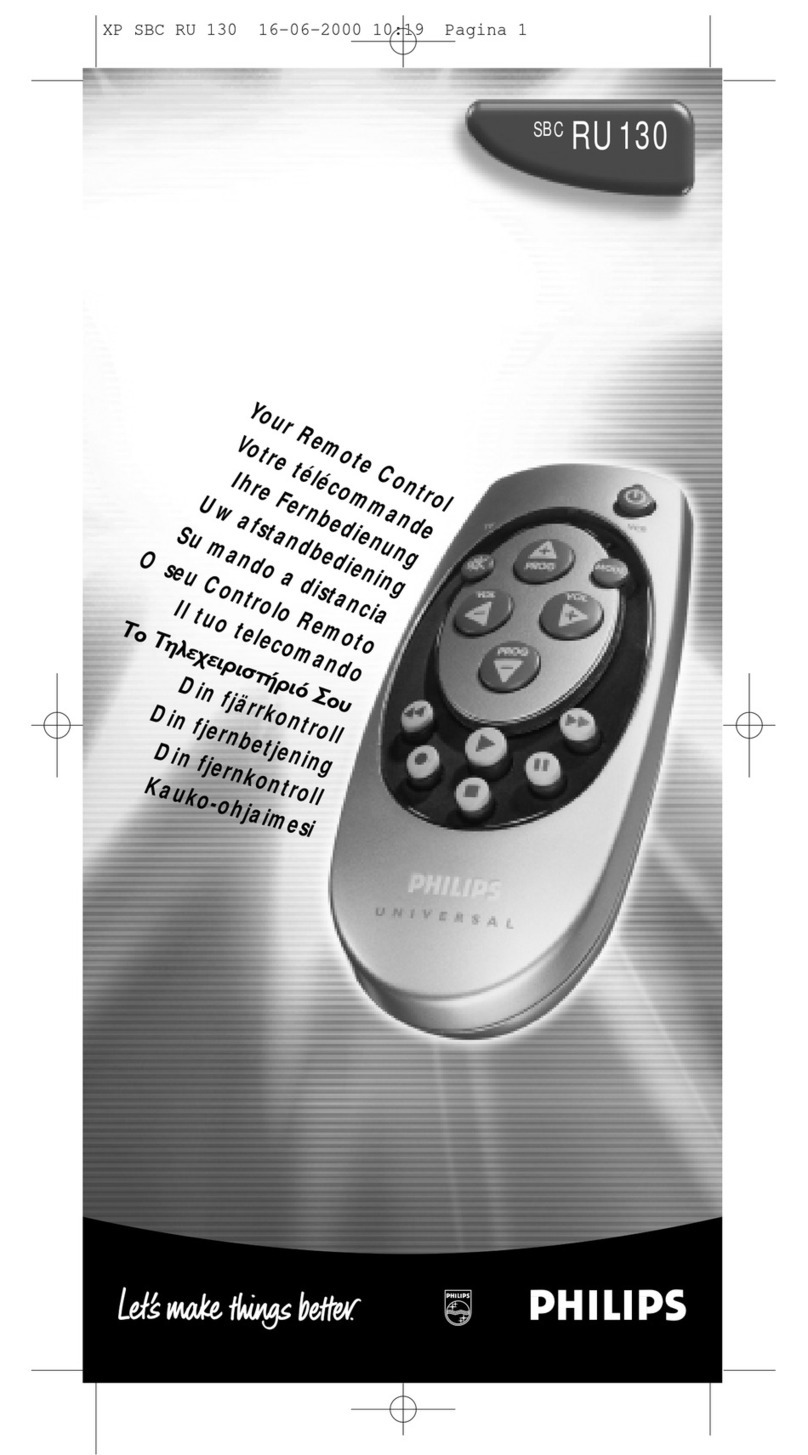Throttle Cut (Air/Heli Only) ......................... 88
Idle Down (Air Only) ..................................... 89
Swash Ring (Heli Only) ................................. 90
Swash (Heli Only, Except H-1) ...................... 91
T1-T4 Setting .................................................. 94
Stick Alarm ..................................................... 95
Warning ........................................................... 96
Telemetry Set .................................................. 97
Telemetry....................................................... 100
Telemetry:Rx-batt ........................................ 104
Telemetry:Ext-volt ....................................... 105
Telemetry:Temp ............................................ 106
Telemetry:RPM ............................................ 107
Telemetry:Altitude ....................................... 108
Telemetry:Vario ............................................ 109
Telemetry:Battery ........................................ 112
Telemetry:Distance....................................... 113
Telemetry:Speed ........................................... 115
Telemetry:Servo Sensor ............................... 116
Telemetry:Current Sensor ........................... 119
Sensor ............................................................ 122
Sensor: Reload .............................................. 123
Sensor: Register ............................................ 123
Sensor: Relocate ........................................... 124
Sensor: Set Slot ............................................. 124
Data Reset ..................................................... 125
FUNCTIONS OF MODEL MENU ............... 126
●Common Functions ...................................... 126
Servo Monitor (Linkage Menu)
Condition (Glid/Heli Only) .......................... 127
Dual Rate ...................................................... 129
Program Mix ................................................. 131
Fuel Mix (Air/Heli Only) ............................. 133
●Airplane/Glider/Multirotor Functions ....... 135
Model Menu Functions List ........................ 135
Pitch Curve (Air Only) ................................ 137
THR Curve (Air/Glid/Multirotor) .............. 138
THR Delay (Air Only) ................................. 139
AIL Differential (Air/Glid Except 1-AIL) . . 140
Flap Setting (Air/Glid 2-FLP and Up) ....... 142
AIL to Camber FLP (Air/Glid 2-AIL+2-FLP
and Up) ....................................................... 143
AIL to Brake FLP (Glid Only, 4-FLP) ....... 144
AIL to RUD (Air/Glid) ................................. 145
RUD to AIL (Air/Glid) ................................. 146
Camber Mix (Air/Glid Except 1-AIL) ........ 148
ELE to Camber (Air/Glid Except 1-AIL) . . 150
Camber FLP to ELE (Air/Glid 2-AIL+1-FLP
and Up) ........................................................ 151
Buttery (Glid Only, Normal Wing 2-AIL and
Up, Flying Wing 2-AIL+1FLP and Up) ... 153
Trim Mix (Glid Only, 2-AIL and Up) ......... 155
Airbrake (Air Only, 2-AIL and Up) ............ 157
Gyro (Air/Glid/Multirotor) ......................... 159
V-tail (Air/Glid) ........................................... 161
Ailevator (Air/Glid) ...................................... 162
Winglet (Flying Wing Only) ........................ 163
Motor (Air/Glid) ........................................... 164
RUD to ELE (Air Only) ............................... 166
Snap Roll (Air Only) .................................... 167
FLY Mode (Multirotor Only) ...................... 169
●Helicopter Functions .................................... 170
Model Menu Functions List ........................ 170
PIT Curve/Pit Trim ...................................... 171
THR Curve/Throttle Hover Trim/Throttle
Limiter ........................................................ 174
THR Hold ...................................................... 177
Swash Mix ..................................................... 178
Throttle Mix .................................................. 179
PIT to RUD (Revolution Mix) ..................... 180
Gyro (for GY Type Gyro) ............................ 181
Governor ....................................................... 184
APPENDIX ...................................................... 187
Timer ST1/ST2 ............................................. 187
Switch Setting Method ................................. 190
Technical updates and additional programming examples available at:
http://www.futaba-rc.com/faq Entire Contents © 2017
